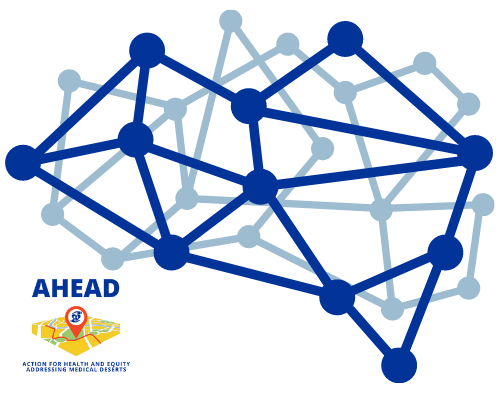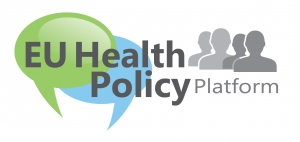Romania: General Practitioners / adjusted 10000 inhabitants & considering neighboring localities
This is a map of Romania showing the number of general practitioners (GP) per municipality, and per 10.000 adjusted inhabitants and considering also the supply and demand in neighboring localities.
The index is adjusted for both demand and supply.
First, population is adjusted according to age structure, by giving more importance to young children (pre-school) and aged population, who require more frequent and intense medical support. In this way, the population is adjusted for demand.
Second, both GPs and population numbers includes also supply and demand in the neighboring localities (on an area of 30km around the center of each municipality). This means that people living in this neighbouring area, adjusted for the age, and all GPs were included in the computations. A decreasing weight was given to the neighbouring population/GPs depending on distance to the locality.
Localities are colour-coded from light blue (lowest numbers) to dark blue (highest numbers).
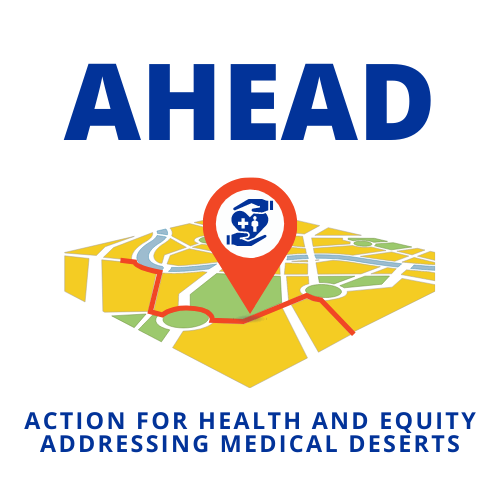


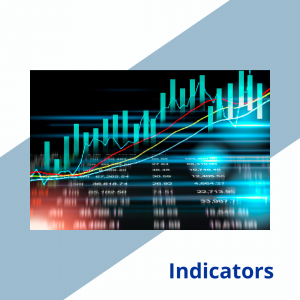
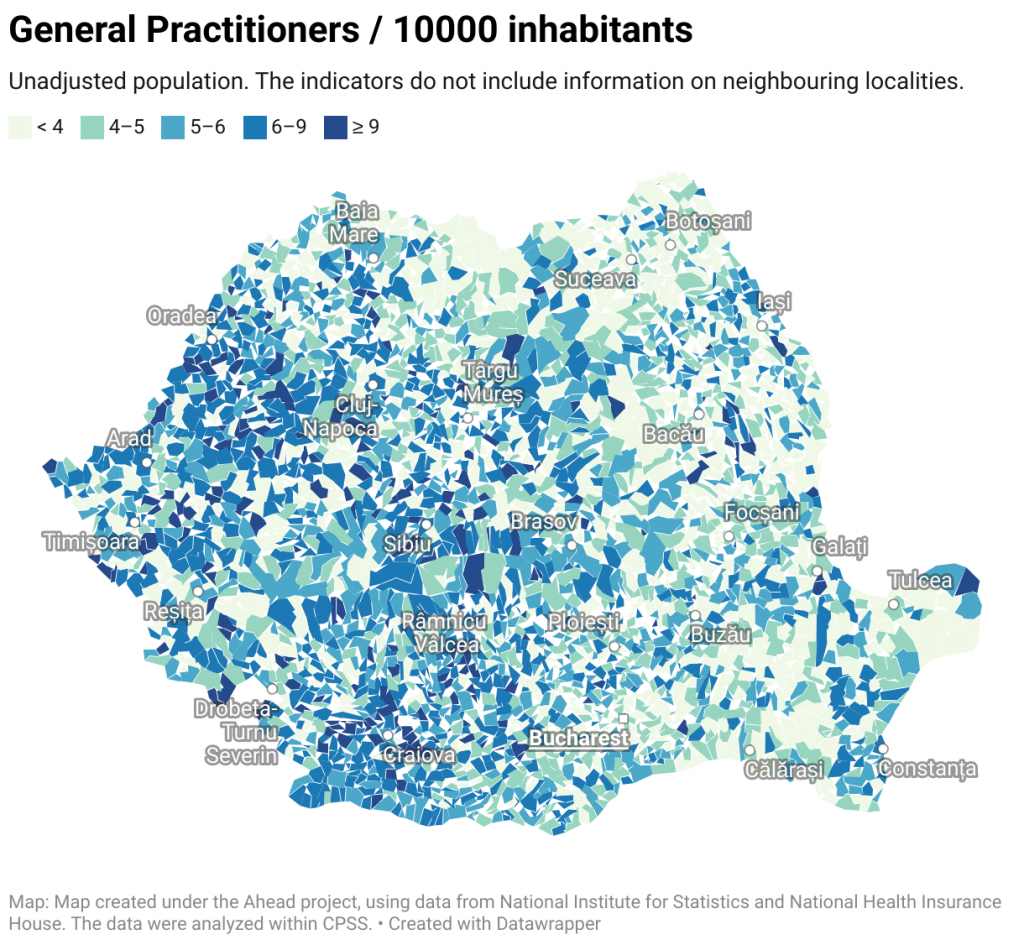
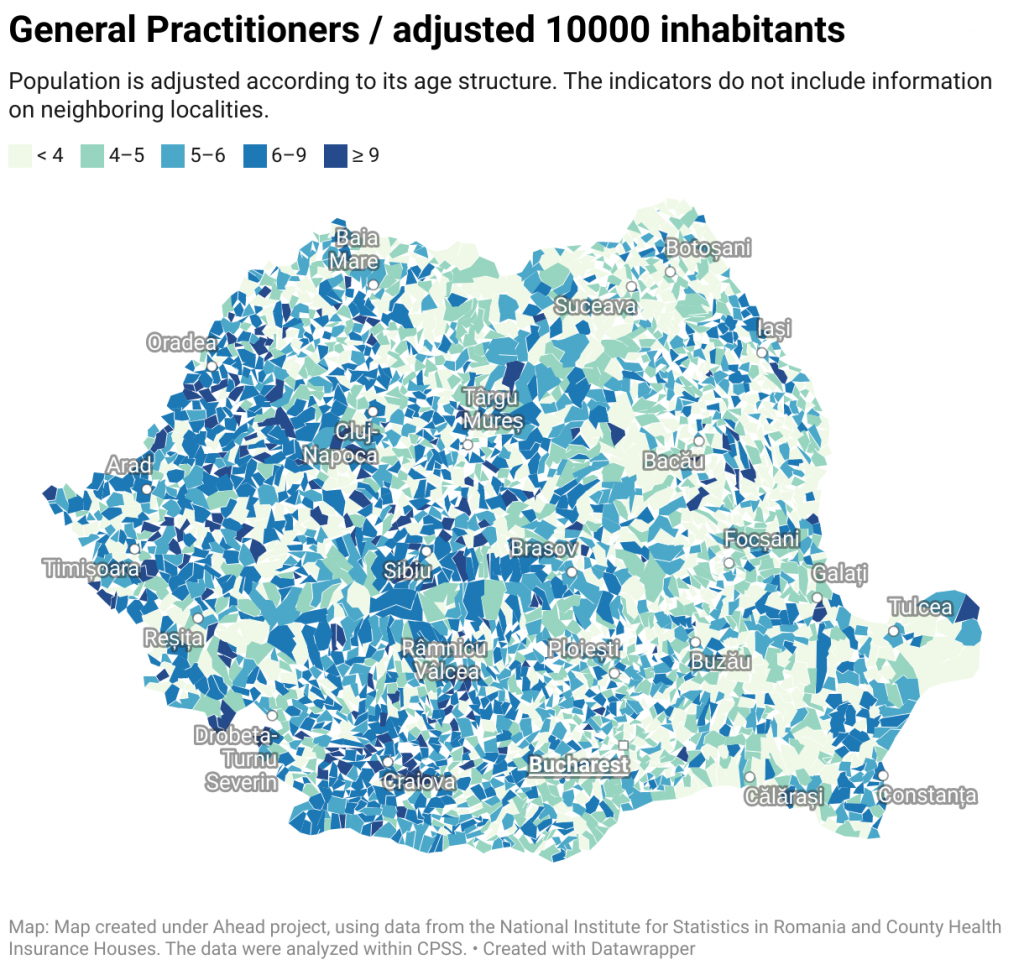
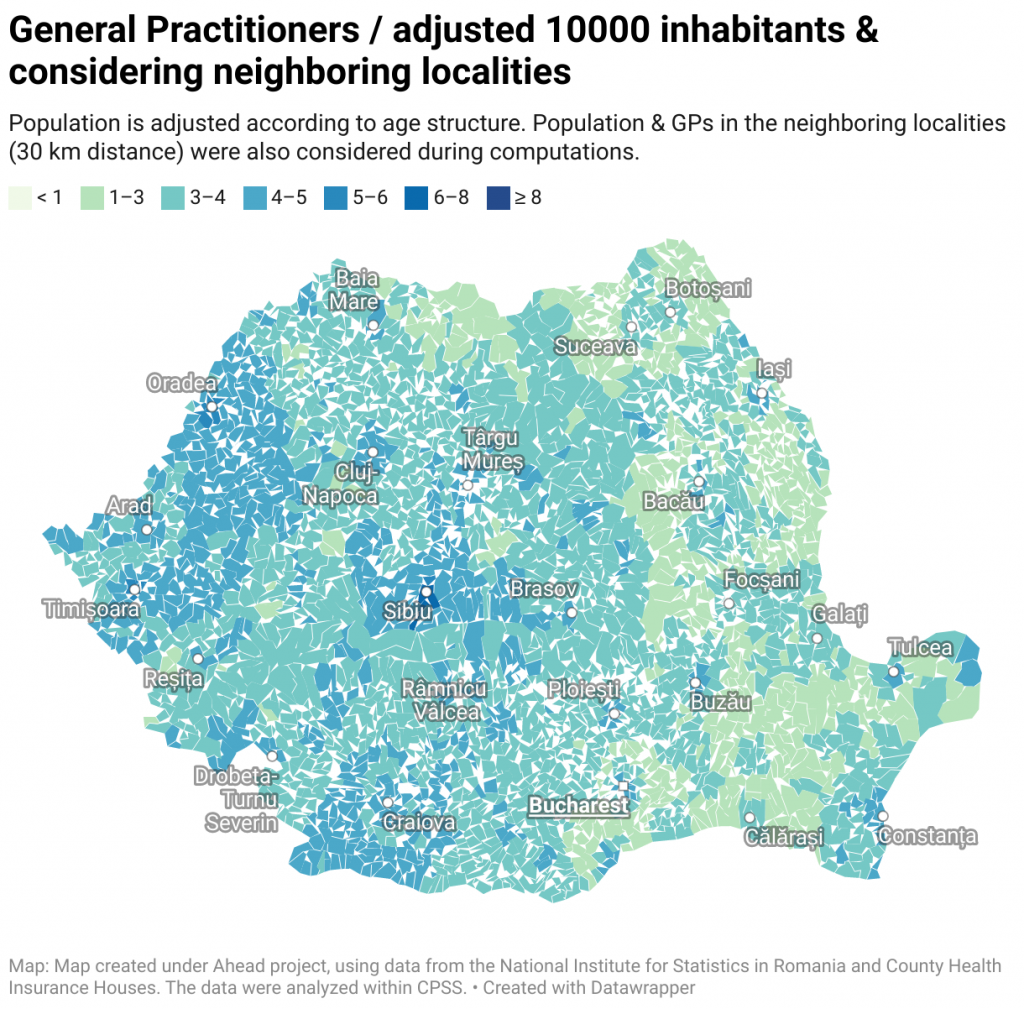
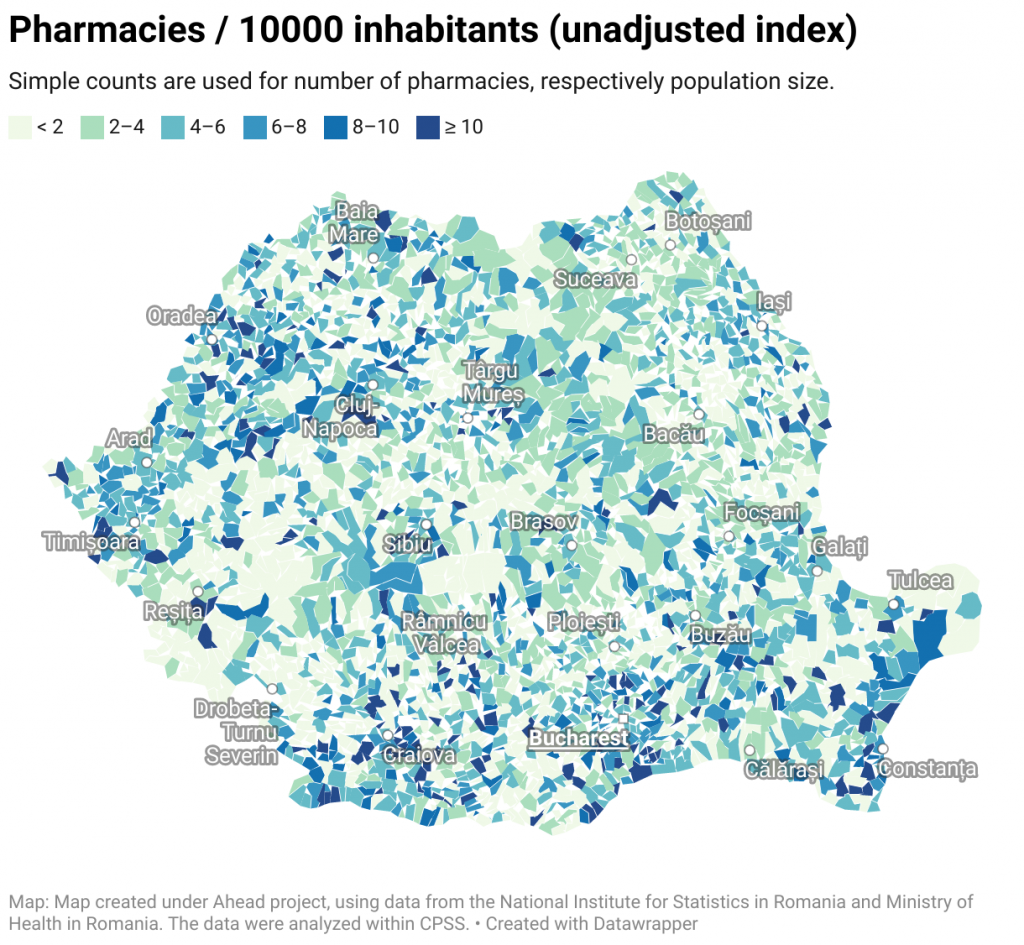
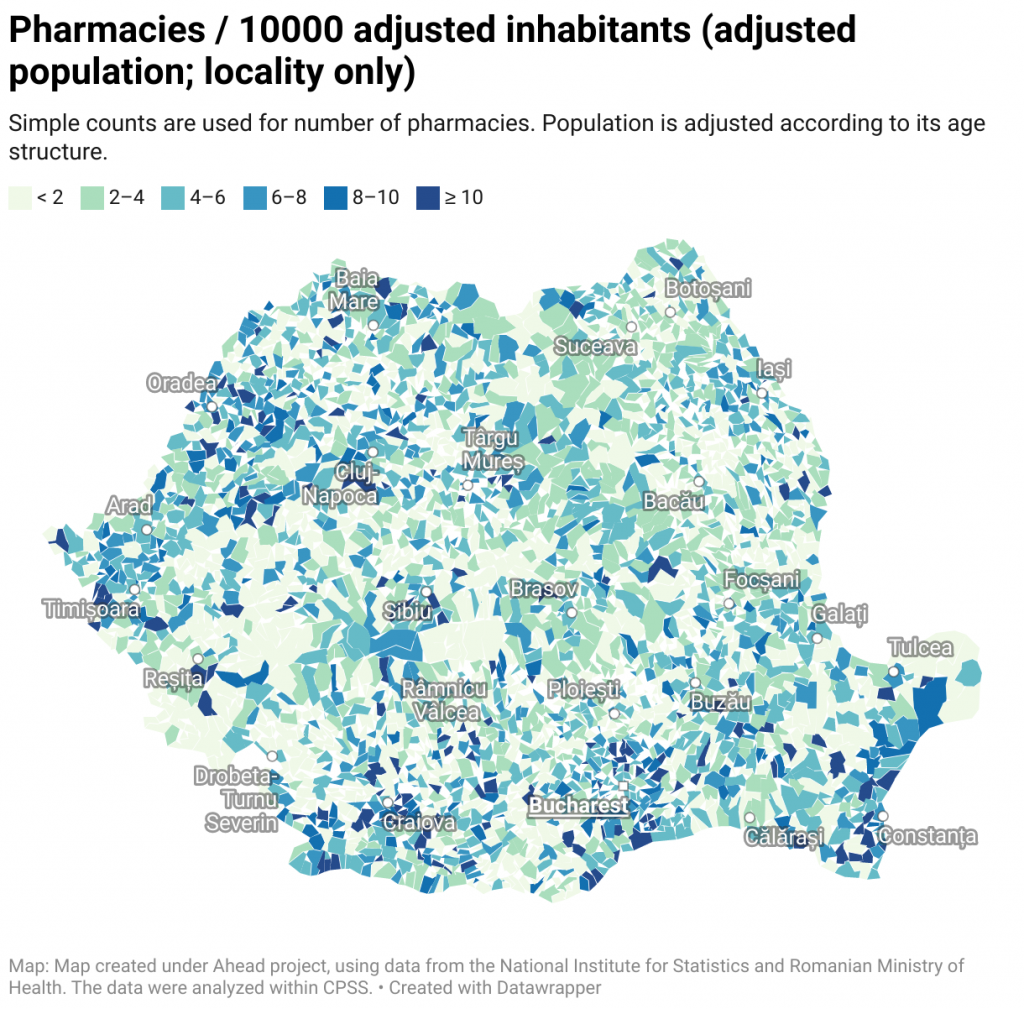
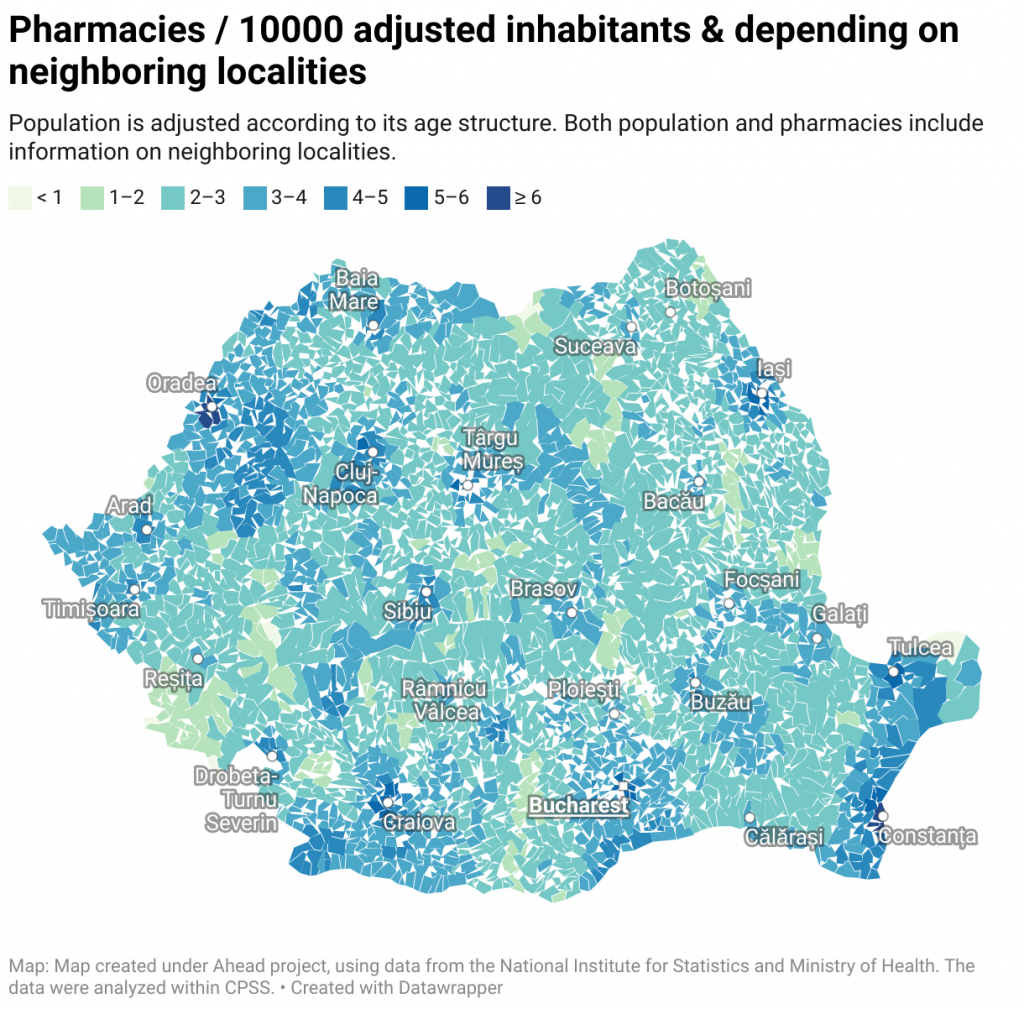
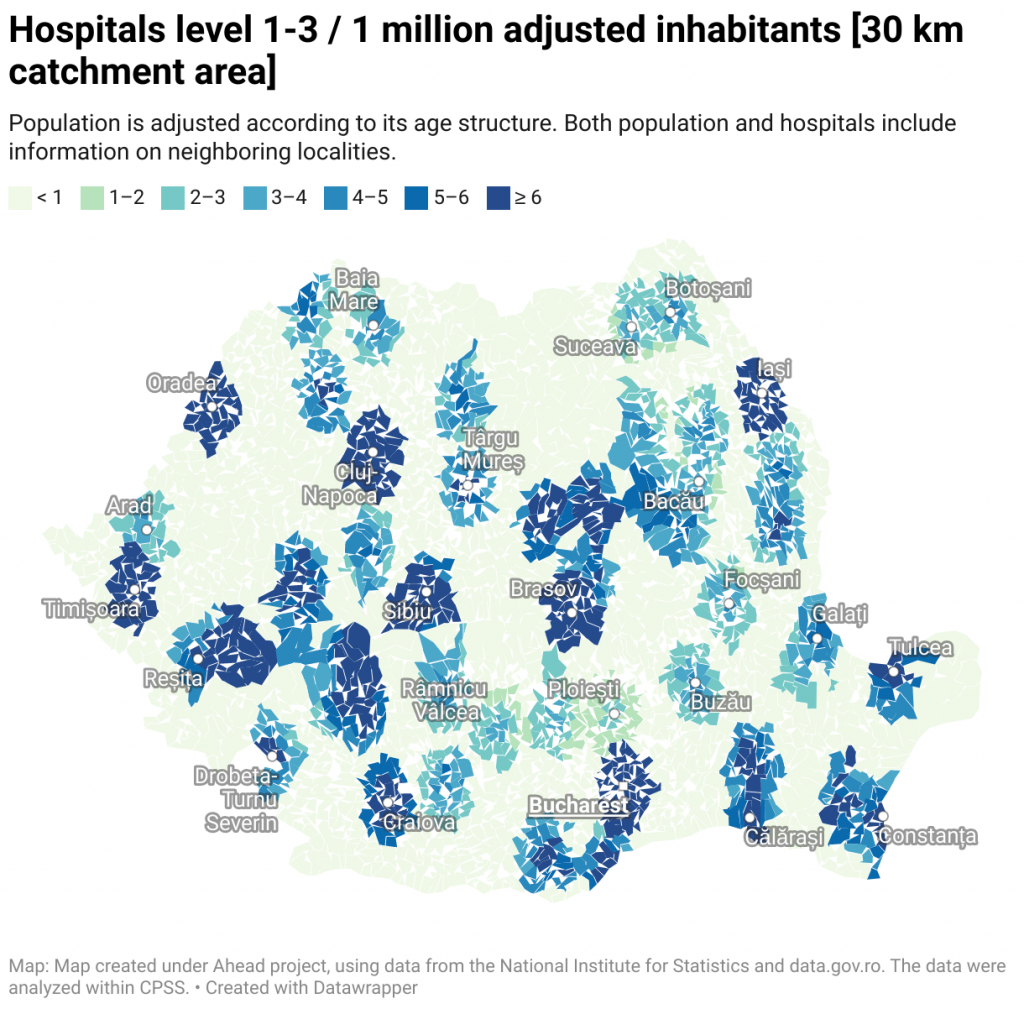
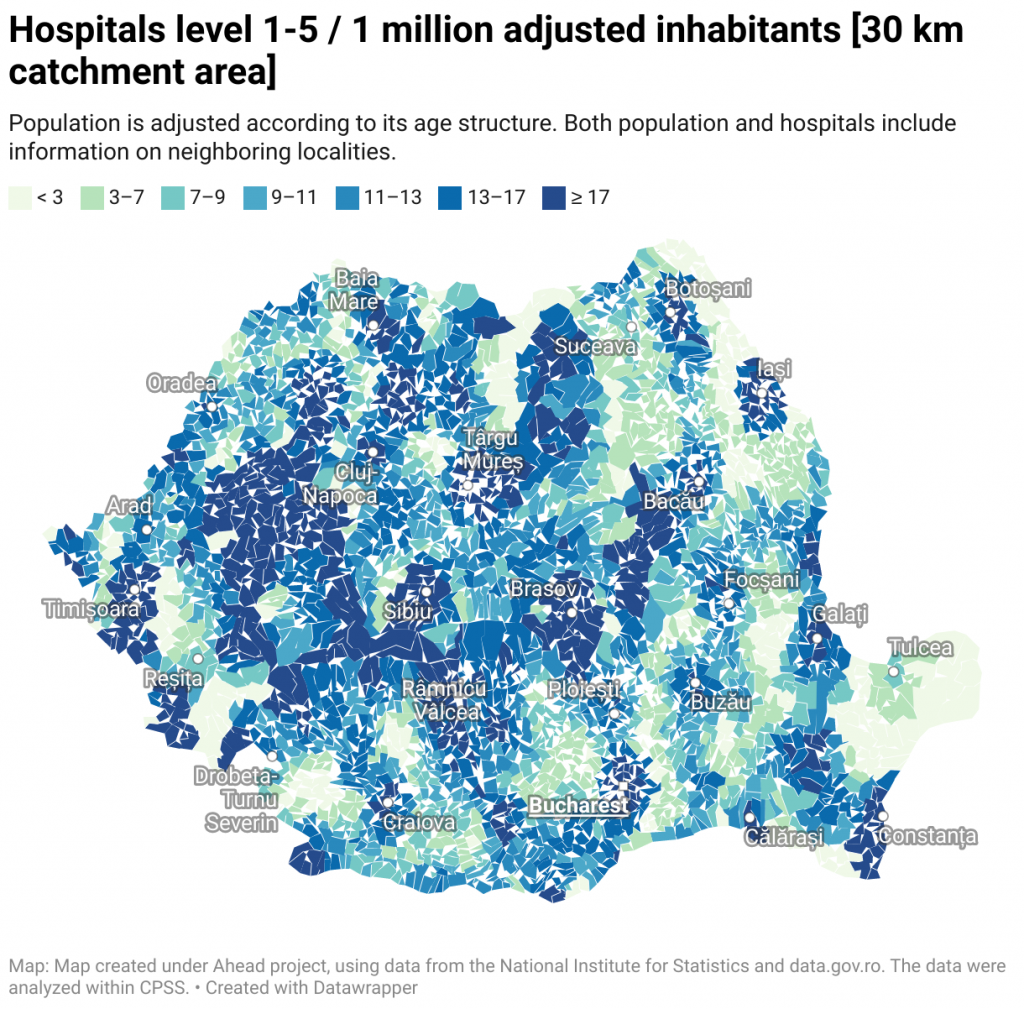
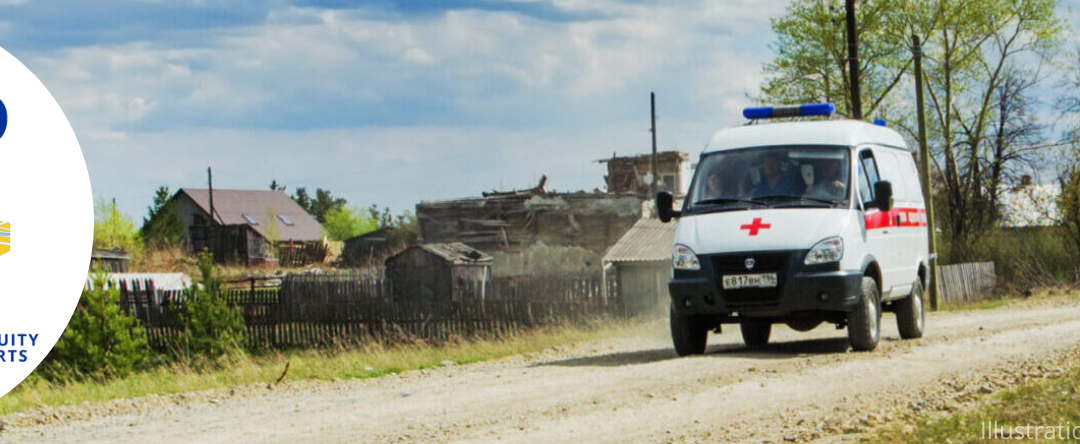
 Countries can address access to health inequalities in the population by improving health worker retention and task-shifting policies. So, what should these policies look like? On March 29th, the five projects of the Health Workforce Projects Cluster on the EU Health Policy Platform – including AHEAD – presented the first results of their research during their second webinar on ‘Fighting access to health inequalities by improving health worker retention and task shifting policies’.
Countries can address access to health inequalities in the population by improving health worker retention and task-shifting policies. So, what should these policies look like? On March 29th, the five projects of the Health Workforce Projects Cluster on the EU Health Policy Platform – including AHEAD – presented the first results of their research during their second webinar on ‘Fighting access to health inequalities by improving health worker retention and task shifting policies’. On June 15-17, 2022, the European Health Management Association’s (EHMA) Annual Conference 2022 – with the theme ‘From people to systems: leadership for a sustainable future’ – will take place in Brussels, Belgium. The conference will bring together key healthcare stakeholders providing the latest evidence on ways to transform health systems. The conference provides opportunities for health managers and health professionals to have their voices heard, to connect with decision-makers, and inform policymaking at the European level.
On June 15-17, 2022, the European Health Management Association’s (EHMA) Annual Conference 2022 – with the theme ‘From people to systems: leadership for a sustainable future’ – will take place in Brussels, Belgium. The conference will bring together key healthcare stakeholders providing the latest evidence on ways to transform health systems. The conference provides opportunities for health managers and health professionals to have their voices heard, to connect with decision-makers, and inform policymaking at the European level. Our first year has been exciting, with many activities and developments which should lay a solid foundation for our project. For example, based on the contexts of the countries AHEAD focuses on, we have been working on a multidimensional definition of medical deserts, conducting qualitative research with stakeholders and collecting quantitative data. In our second year (starting in April 2022), we will implement our draft consensus-building methodology, and design policy options for policy makers to possibly implement in their countries.
Our first year has been exciting, with many activities and developments which should lay a solid foundation for our project. For example, based on the contexts of the countries AHEAD focuses on, we have been working on a multidimensional definition of medical deserts, conducting qualitative research with stakeholders and collecting quantitative data. In our second year (starting in April 2022), we will implement our draft consensus-building methodology, and design policy options for policy makers to possibly implement in their countries.


